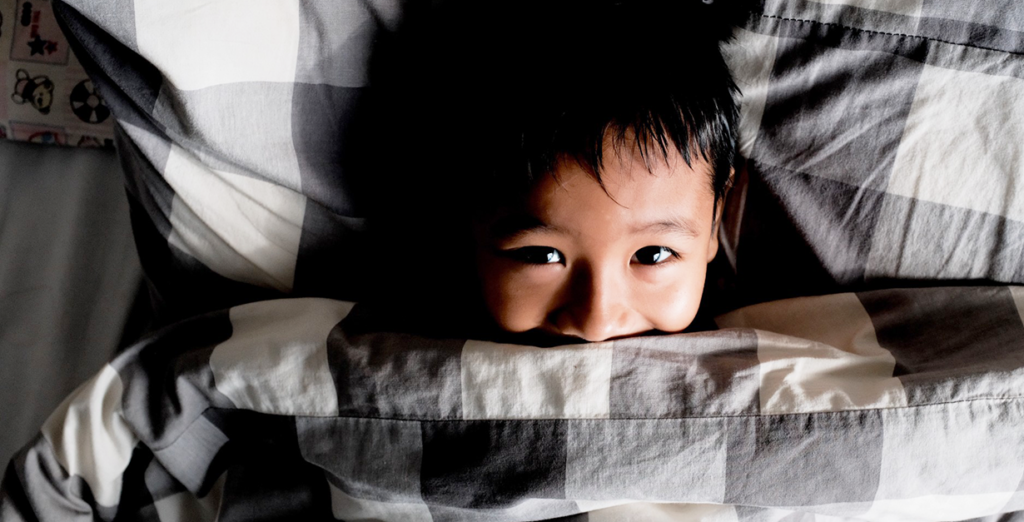The 2-Year Sleep Regression – How to Get Your Child Back to Sleep
The 2-Year Sleep Regression – How to Get Your Child Back to Sleep
Many parents breathe a sigh of relief once their child hits the toddler years. But then you’re dealing with molars, budding independence, and (for some) potty training. Logically, we think that development keeps moving forward, but when it comes to two year olds, you’ll notice that there’s a bit of backsliding as they learn new skills and grow up a bit, which includes the potential for the 2 year sleep regression. For this regression you’ll want to know about:
- Naptime/bedtime resistance
- Potty training
- Separation anxiety
- Handling with consistency and care
The 2 year Sleep Regression – What Happened?
You may find that your 2-year-old who was sleeping perfectly every night is now up multiple times. Or your partially potty trained toddler suddenly can’t remember to use the bathroom half the time. Or maybe your perfect napper suddenly screams all through naptime. The 2 year sleep regression is enough to drive parents crazy with all of the development and changes that are occurring.
In reality, it’s a very good sign! It means that your toddler’s knowledge and skills are advancing and that they are sacrificing sleep to master another skill. Frustrating as this may be, consider this:
Your Child’s Awake Time Has Lengthened
Your toddler is down to just one nap, and only needs 10 1/2 to 11 hours of sleep every night. This can take some getting used to, and also means that you may experience a rash of nighttime awakenings.
Wondering about appropriate naps at 2?
Read: Baby and Toddler Naps — Everything You Need to Know
Naptime Resistance
2 year-olds are known for testing (and re-testing) boundaries. One of the most common hot spots is naptime. Your toddler is going to test boundaries. She knows that life goes on while she’s napping, and she’s not okay with that anymore. This phase can be incredibly frustrating, because a toddler who fights naps is a very tired toddler indeed.
Two year-olds think they are ready to give up their naps, but we as parents know better.
When should you drop that last nap?
Read: Dropping The Afternoon Nap — Transitioning To Quiet Time For Toddlers
Bedtime Resistance
If you have a toddler, I’m sure that you’ve heard pleas such as “Just one more story, mom”, “5 more minutes”, “I just want to snuggle a bit longer”, and the ever-popular “One more drink, please?” These stall tactics are just that, stall tactics. Your child wants to see what she can get away with. It’s a power struggle, and she’s asserting her independence. If this is a regular occurrence, consider starting the nighttime routine earlier so that she gets to be one time AND gets her extra story.

If you have a toddler, I’m sure that you’ve heard pleas such as “Just one more story, mom”, “5 more minutes”, “I just want to snuggle a bit longer”, and the ever-popular “One more drink, please?” These stall tactics are just that, stall tactics. Your child wants to see what she can get away with.
Toilet Training
Some 2 year-olds are ready to be potty trained, while other children aren’t ready until closer to 3. If your child is working on potty training, expect that her focus in other areas (like sleep) may regress a bit, as learning such a big skill takes a lot of concentration and effort.
Separation Anxiety and Nighttime Fears
You may notice that your once-independent toddler is suddenly clingy and afraid to let you leave the room. Part of this is your toddler’s imagination, which is a wonderful thing, until she starts imagining that there are monsters under the bed. This is totally normal, and may cause some bedtime resistance.
How to Handle the 2-Year Sleep Regression
Like the other sleep regressions, the 2-year sleep regression may or may not affect your toddler. If you find that you’re suddenly dealing with a no-napping, bedtime-resisting, cranky ball of whine, then you’re probably looking at the 2 year sleep regression. The good news is that it may be the easiest regression to manage.
Consistency is Key
As with anything sleep-related, consistency is key. Continue to nap on your toddler’s schedule, even if she just sits in her crib quietly for 45 minutes. Remember, most children nap until they’re 3, so stick with it. Likewise, continue your normal soothing bedtime routine, and make sure that you are keeping the same bedtime every night.
Avoid Making Assumptions
Many parents assume that if their toddler is resisting naps or sleep, that they really don’t NEED a nap anymore, or they should have a later bedtime. Developmentally, though, your toddler still needs her sleep. She still needs her nap and bedtime to be at an age-appropriate time, so make sure that you’re getting her into bed, even if she sits and sings for 45 minutes. You don’t want to move her bedtime later or skip naps, only to want them back in two weeks when she’s totally melting down from lack of sleep.
Set Some Rules
Toddlers (and all children, really) thrive on boundaries, and it’s up to us to set those for them. When it comes to sleep, make sure those items are non-negotiable. Bedtime is always 7:30 p.m. Naps happen at 12:30 to 1:00 p.m. every single day. Even if your toddler claims that she’s not tired, or doesn’t want to, make sure that she at least lies down and lets her body rest.
When all else fails, blame it on the clock. “See the clock? It’s 12:30, which means it’s time to rest for a bit.” Most 2 year-olds will not be able to read a clock, so if it helps, consider a wake up clock with a nap setting that changes the color or picture to indicate naptime and bedtime.
Need to know what kind of schedule is best for your 2-year-old?
Read: Sample Schedules: Sleep and Naps From 6 Months to Preschool
Be Understanding About Your Toddler’s Fears
Nighttime fears are a big deal to our little ones. Your toddler has an incredibly vivid imagination, so take that into account and fuel it with good thoughts. Introduce (and encourage bonding with) a lovey, or do some light toddler yoga or visualization to help her relax.
Perhaps the best thing to remember about sleep regressions is that they’re temporary, usually lasting about 2-3 weeks. Your toddler may be a bit more snuggly, needy, or sleep resistant during this time, but follow your gut, don’t change the rules, and your 2 year-old will be sleeping through the night again soon.
If you find that these problems have been problems for years, or continue past 6 weeks, then it’s time to sleep coach.
Get the sleep help your family need with one-on-one help with a certified, trained Gentle Sleep Coach.
Find a Coach
The post The 2-Year Sleep Regression – How to Get Your Child Back to Sleep appeared first on The Sleep Lady.
https://ift.tt/33kOfMI from The Sleep Lady https://ift.tt/2GjQh6K



Post a Comment